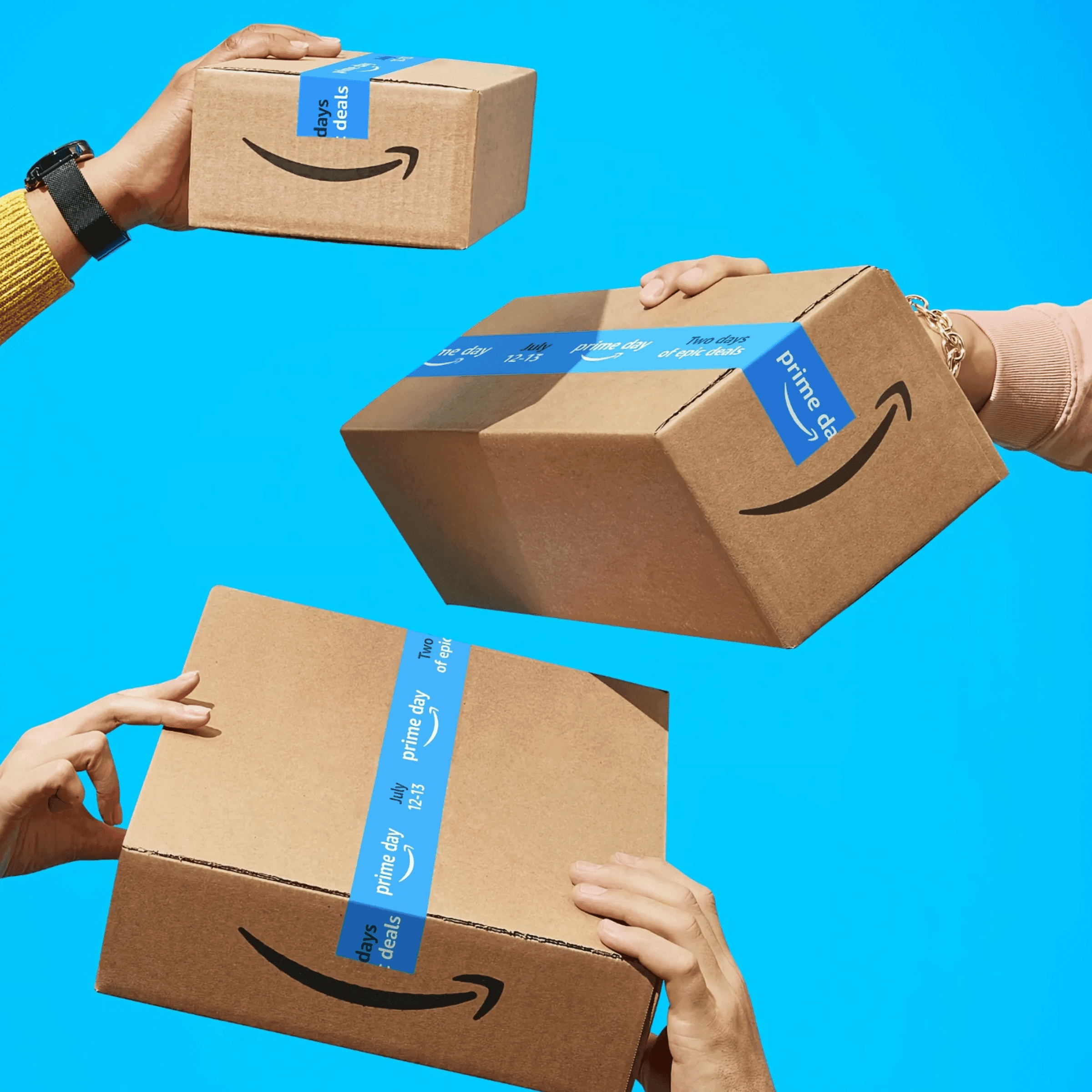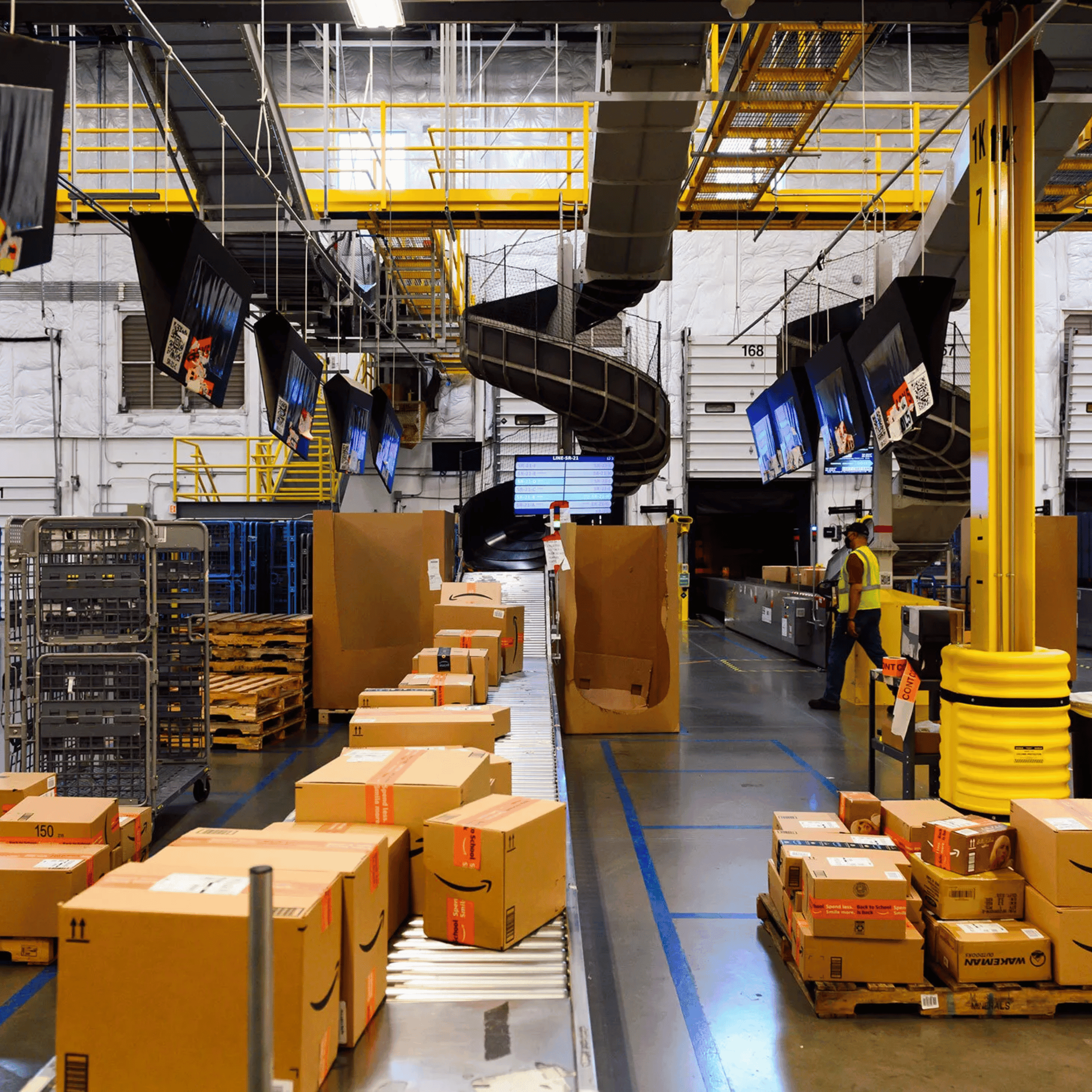As Amazon tightens its operational and packaging standards, FBA prep in 2026 is no longer a simple box-and-ship process. It’s now a highly regulated workflow that demands precision across every stage—data management, labeling, cartonization, palletization, and sustainability compliance.
For brands selling through Amazon, these new rules mean one thing: your fulfillment process must be audit-ready, digitally traceable, and physically compliant—or risk delays, chargebacks, and inbound rejections.
This article breaks down exactly what’s changing in 2026, how it affects your brand, and how partnering with a 3PL like Snapl can ensure every inbound shipment meets Amazon’s standards before it ever leaves your warehouse.
What’s Changing for FBA Prep in 2026
Amazon’s latest compliance updates are designed to improve inbound efficiency and sustainability—but they also raise the bar for every brand participating in FBA.
Here’s what’s new:
- GS1 Validation Enforcement: Amazon now requires verified GS1 ownership for all UPCs and GTINs. Any mismatched or recycled codes can lead to relabeling, suppressed ASINs, or shipment holds.
- Stricter Carton & Pallet Specs: Maximum carton weights, dimensions, and overhang tolerances are being enforced across all inbound facilities. Four-way pallets with edge protection are now the standard.
- Labeling Accuracy: FNSKU and manufacturer GTIN barcodes must be clearly separated, scannable, and properly positioned within defined quiet zones.
- Hazmat & Battery Regulations: Products containing lithium or chemical components must include validated SDS files and can only ship to approved hazmat nodes.
- Sustainability Mandates: Frustration-Free Packaging (FFP) and curbside-recyclable standards are expanding, and many exemptions are being sunset.
- Inbound Defect Thresholds: Brands that consistently exceed error limits (incorrect labels, mixed cartons, inaccurate ASNs) will face fines and routing restrictions.
- Audit Readiness: Amazon now requests photo documentation and process evidence when disputing inbound defects—making traceability essential.
Together, these changes mean compliance isn’t optional. It’s a measurable performance metric that affects your costs, delivery speed, and seller health score.

Core Foundations of a Compliant FBA Prep Program
1. Accurate Product Data & GS1 Alignment
Every product entering the FBA network must be linked to valid, GS1-registered GTINs. Dimensions, weights, and case-pack counts in Seller Central must match what’s physically shipped. A single data mismatch can trigger a compliance flag.
2. Barcode Strategy and Label Quality
Amazon now distinguishes between FNSKU (Fulfillment Network Stock Keeping Unit) and manufacturer barcodes. Choose one and mask the other. Labels must be printed at high contrast, with quiet zones intact, and placed flat—not wrapped or curved. Always test-scan before shipment.
3. Protective and Sustainable Packaging
All units must arrive sealed, scannable, and damage-free. Polybags require suffocation warnings, fragile items need bubble protection, and packaging materials must now trend toward recyclable, mono-material formats. Sustainability is now a compliance factor, not just a marketing choice.
4. Cartonization Precision
To avoid inbound errors, Amazon prefers one ASIN per carton. Mixed-ASIN cartons are allowed but risky—they must perfectly match the Box Content File (BCF) and ASN data. Carton labels must be placed on a flat surface, not corners, and remain unobstructed.
5. Palletization That Passes Audit
Amazon’s inbound docks require standard 40" × 48" GMA-style pallets, built with uniform tops and no overhang. Pallets should have labels on two adjacent sides at eye level, and be securely wrapped with barcode visibility. Non-standard pallets risk rejection upon arrival.
6. ASN and Digital Accuracy
Most chargebacks stem from mismatched Advance Shipment Notifications (ASNs). Always generate ASNs after final QC—once cartons are labeled and sealed. Sync your ASN data with real physical counts and keep photo records to validate every inbound load.
High-Risk Compliance Areas to Watch
GTIN / FNSKU Conflicts
Exposed manufacturer barcodes can trigger double scans. Select one labeling system and enforce it across all SKUs.
Incorrect Box Content Files
Phantom cartons or inaccurate inner counts result in rejections. Always tie your ASN creation to verified scan data.
Overweight Cartons
Cartons over 50 lbs. (without exemption) are no longer accepted at most Amazon centers. Split cases or re-engineer packaging to stay compliant.
Hazmat / Battery SKUs
Battery and chemical-based items now require digital SDS validation. Without it, Amazon will block the shipment from routing.
Sustainability Requirements
Amazon is phasing out non-recyclable packaging. Update your materials to meet Frustration-Free Packaging (FFP) or curbside standards now—before exemptions expire.

Building a Future-Proof FBA Prep Workflow
To succeed under 2026’s new rules, brands must evolve from manual prep processes to documented, photo-verified systems.
Here’s how:
- Centralize Product Data: Create one digital source of truth for all SKU dimensions, weights, and case packs.
- Photo-Verify Every Step: Capture images of units, cartons, and pallets for audit protection.
- Maintain a Barcode Matrix: Document barcode type, placement diagrams, and masking requirements per SKU.
- Train Suppliers & Co-Packers: Share your prep and packaging SOPs so compliance starts at the source.
- Conduct Monthly Audits: Track inbound errors by vendor, ASIN, and line to identify repeat offenders.
- Integrate Tech Systems: Use Shipedge or your OMS to automate label generation, ASNs, and digital evidence storage.
With these systems in place, compliance becomes predictable—and your FBA operations scale more efficiently.
Budgeting for 2026 FBA Prep
To remain compliant under the new standards, brands should plan for incremental costs in their fulfillment budgets, including:
- Labeling & Relabeling Fees (per unit/carton)
- Rework & Kitting Labor (poly-bagging, bundling, inserts)
- Cartonization & Packaging Adjustments
- Palletization Materials (wraps, corner boards, compliance relabels)
- Hazmat Handling & Documentation
- Inbound Defect Contingency (rework or chargeback buffer)
These are not optional costs—they are the price of maintaining access to Amazon’s massive fulfillment infrastructure.
How 3PL Partners Simplify Amazon FBA Prep
Working with an experienced 3PL fulfillment provider can drastically reduce the operational risk of FBA compliance.
At Snapl, our FBA prep workflows are engineered for full transparency and alignment with Amazon’s latest standards:
- GS1 Verification & FNSKU Management
- Photo-Verified SOPs for Every Unit and Pallet
- Carton Re-Engineering to Optimize DIM Weight
- Hazmat & SDS Compliance Oversight
- Shipedge + Amazon API Integration for Seamless ASN Sync
- Dedicated Peak Season Surge Capacity
By outsourcing to a 3PL that understands both logistics and compliance, your brand can focus on growth while staying audit-ready year-round.

FBA Prep Compliance Checklist for 2026
Use this quick-reference checklist to confirm that your inbound shipments meet every Amazon requirement.
Product & Data
- Confirm GS1 ownership for all GTINs and UPCs.
- Ensure dimensions, weights, and case packs match Seller Central data.
- Document each SKU’s barcode strategy (FNSKU vs. manufacturer).
Packaging
- Apply protective packaging (polybag, bubble wrap, box) as needed.
- Include suffocation warnings where required.
- Use recyclable, mono-material packaging to meet FFP standards.
Cartonization
- Ship one ASIN per carton whenever possible.
- Keep carton weight below 50 lbs. unless exempt.
- Apply labels flat and scannable, not over edges or corners.
Palletization
- Use standard 40" × 48" GMA pallets with no overhang.
- Apply two scannable pallet labels on adjacent sides.
- Wrap pallets securely while maintaining barcode visibility.
Digital Accuracy
- Create ASNs only after QC and labeling are complete.
- Store photo documentation of units, cartons, and pallets.
- Match digital data with physical contents 100%.
Hazmat & Battery Items
- Keep all SDS files current and accessible.
- Route DG SKUs only through eligible Amazon hazmat facilities.
- Maintain compliant DG packaging and labeling materials.
Governance
- Conduct monthly defect audits by vendor and ASIN.
- Update supplier scorecards with inbound accuracy data.
- Refresh team training quarterly on new FBA standards.
Frequently Asked Questions
Do I need FNSKU labels if my UPC is valid?
Not always. Some SKUs can use manufacturer barcodes, but FNSKUs give you better control over inventory traceability. Choose one system and mask the other.
What’s the most common cause of FBA chargebacks?
Incorrect or incomplete box content files (BCFs). Always verify that digital data matches physical contents before generating labels.
Are mixed-ASIN cartons allowed?
They are, but they carry risk. Unless every item is accounted for digitally and physically, expect inbound delays and potential rework fees.
Do battery-powered products require special prep?
Yes. You must provide a valid Safety Data Sheet (SDS) and follow Amazon’s hazmat routing policies.
Preparing Your Brand for 2026 and Beyond
The 2026 FBA prep landscape rewards precision and penalizes inconsistency. Amazon’s compliance expectations will continue tightening, favoring brands that invest in data integrity, packaging discipline, and proactive 3PL partnerships.
With Snapl’s Amazon FBA Prep and Labeling Services, your brand gains a dedicated team that manages every detail—from GS1 verification to carton engineering—so you can scale confidently without risking compliance setbacks.

Don’t let compliance slow your growth.
Contact Us





